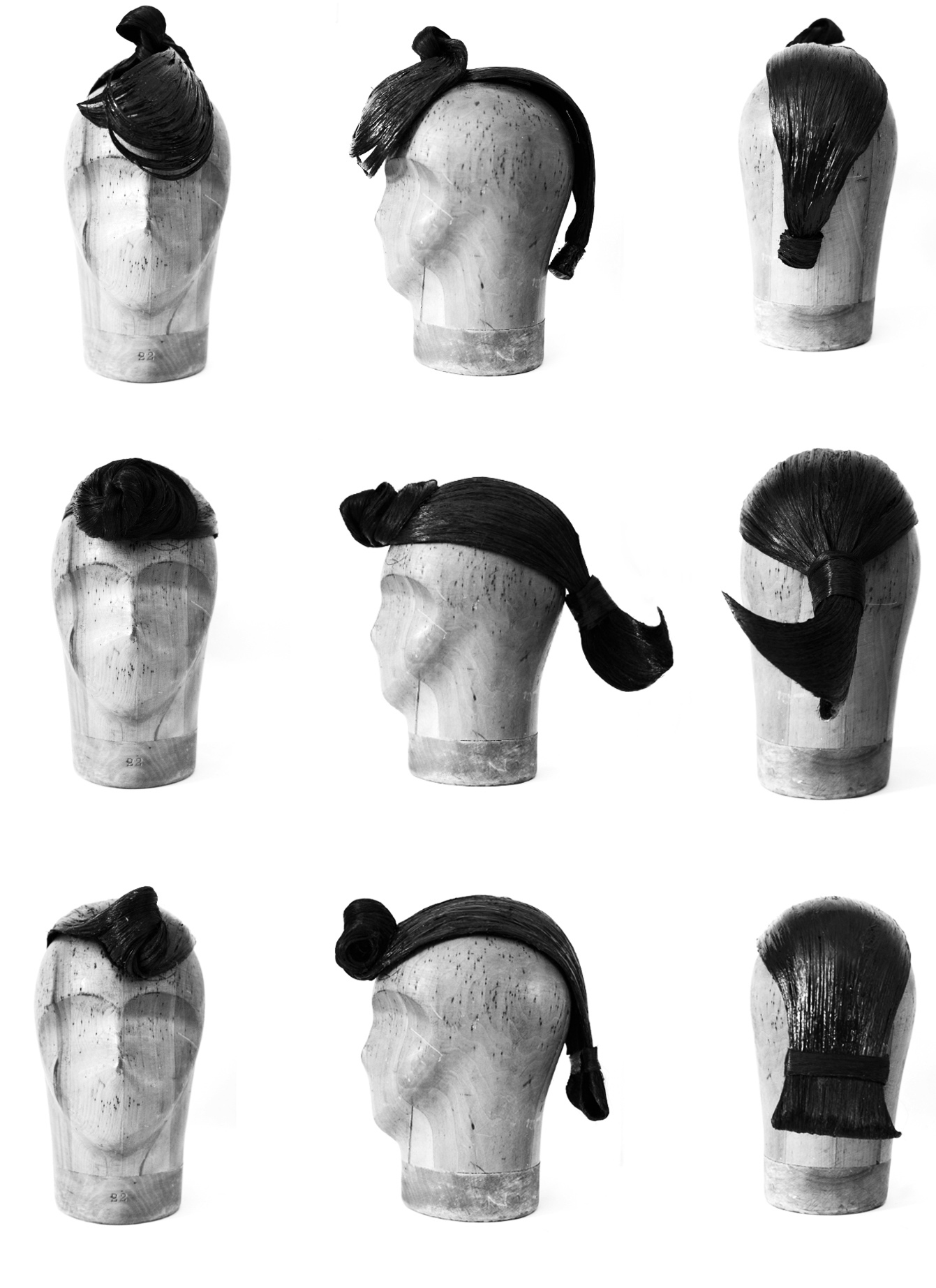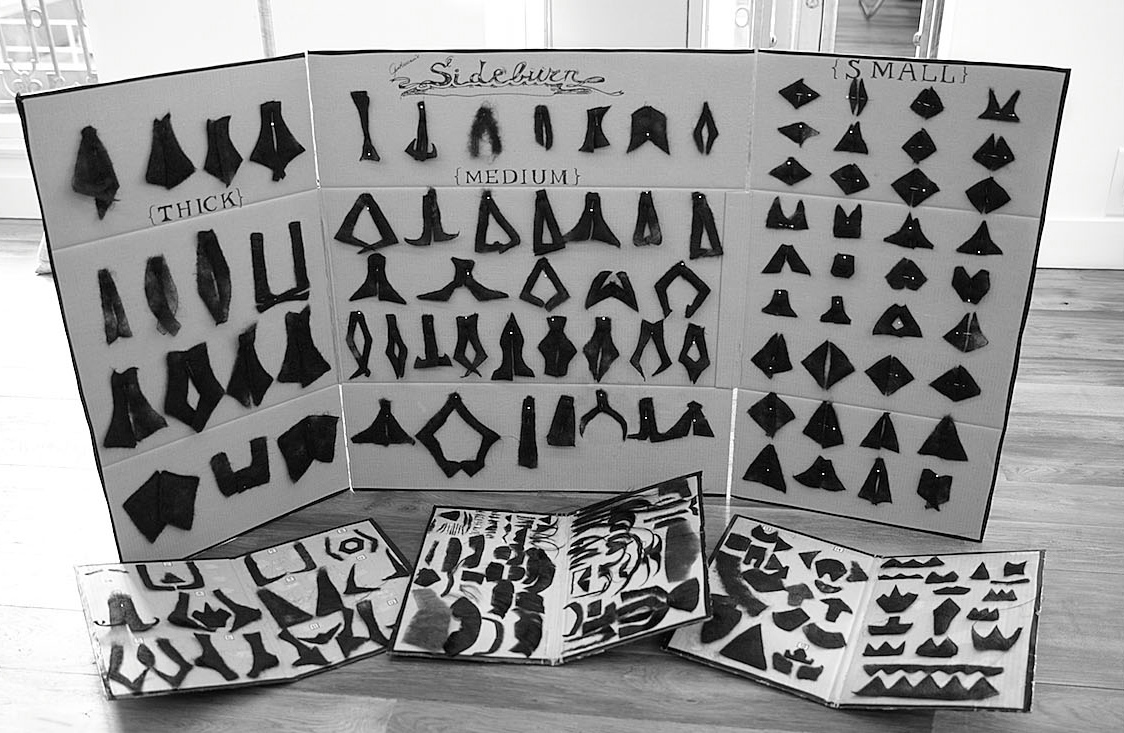After setting up shop first in Tokyo, then London, and now New York, it might seem like hair stylist and headpiece designer Tomihiro Kono has seen it all. But after nearly 20 years creating some of the most one-of-a-kind looks in fashion, Tomi is just as curious and adventurous as he was when he spent his childhood afternoons searching for buried treasure hidden in the Japanese mountains. Tomi transitions effortlessly from fashioning romantic Victorian headpieces straight outta Miss Havisham’s closet to creating the Party Monster-meets-Metropolis retro-futuristic caps that stole the show at Junya Watanabe fall/winter 15. We catch up with the designer about working with Junya, ditching orange groves for hair salons, and why his parents wouldn’t let him play Nintendo.
Tell us about yourself. Where did you grow up and what were you interested in as a teenager?
I grew up in a small village in southern Ehime, Japan surrounded by mountains and the sea, so most of my time was spent outside with nature, family and friends. My parents encouraged me to spend time outside and refused to buy me a Nintendo game machine, which was popular with my peers. Instead, they bought me a baseball glove. I was first inspired by the film The Goonies; I pretended be an explorer and looked for treasures in the isolated islands surrounding my home town, built base camps and made treasure maps. So many adventures and so much fun! Then I became a teenager and loved rock and punk music and, of course, fashion. I would sit and read UK culture and fashion magazines for hours.
How did you get started working in hair?
Quite funnily, really, as I was supposed to be going to the agricultural university to follow in my parents’ footsteps. They were orange farmers, but I didn’t qualify and decided to go in a different direction: HAIR. At first I was more into working with animals – I love animals – but my mother advised that I should work with people and cut their hair because I would be thanked by them.

You worked in Tokyo for ten years before moving to London in 2007. Has either city influenced the direction of your work, and if so, how?
When living in Tokyo, I was fascinated by European cultures, design, fashion, everything. Whilst working in the hair salon, I was into making cool images and studied photography by assisting photographers. I wasn’t able to sleep much when I was in Tokyo because I was so busy working in a salon during the day, training at night, and then hunting hair-cut models in Harajuku on my day off. My aim was to concentrate and master all the basic haircut techniques before I left Tokyo.
Before I left Japan for London, I visited Kanasugi, a traditional Japanese beauty salon, to learn some Geisha hair techniques – called Takashimada – to help perfect hair technique from my culture. When I got to London, I found there was so much inspiration around. So many people were creative and original and had their own lifestyle and fashion. So unique.
When and how did you make the transition from hair styling to creating hair and headpieces?
In London, there was so much creativity and it felt avant-garde: mixing old with new, creating intelligent, edgy styles together. I felt I needed my own originality as a hair stylist, my own voice, my own direction, so I started making head props. I always loved visiting antique markets in London, they can be so inspirational. I wanted to learn more and understand how things were made by hand – all the details of embroidery in Victorian period clothes and laces – to help with my head pieces and props.
You’ve worked with Junya Watanabe on several collections, including menswear. What’s your collaborative process like?
It’s always very challenging to make something new between us, and I mean this in a good way. Mr. Junya Watanabe doesn’t show me the collections or what his vision is for the coming collection. So every time, I have to come up with ideas to show Mr. Junya Watanabe when we meet. It’s a very organic process, working in silence with Mr. Junya Watanabe. It’s more of a feeling, an understanding between us. When finalizing the looks, we discuss several times in meetings before we head to Paris for the show. I always can’t wait to see how my head props and his clothes come together.

What’s the story behind your pieces for Mr. Watanabe’s fall/winter 15?
Under the theme ‘Semiotics and Structuralism,’ I came up with six or seven designs and proposed them to Mr. Junya Watanabe, and he chose one design he liked. As I had made all prototypes in paper for Junya to see, I then had to think about what material to now use! The design Mr. Junya Watanabe chose was very big, so I had to think light material for stability and, of course, for the model. Then I came up with the idea of SPONGE! This was my first time using sponge as a head piece material. The design is originally inspired by 3D hair-cut diagrams – technical drawings that hair stylists use for cutting hair. I learned how to draw the diagrams when I was working in hair salons.
You’ve mentioned in the past that you enjoy working with vintage materials. What are some of the most interesting materials you’ve found or sourced?
Whilst in London, I was very into vintage and natural material. Then I moved to NYC and started playing with materials that are more chemical and industrial. I like to adapt to my surroundings, so my style depends on where I’m living and what I see in my daily life.

How would you describe your style?
I’d say gothic and romantic, but I love to make any style and very much enjoy pushing the boundaries of my own limitations.
How do you get inspired?
I get inspired by nature, all things around me. I like to be surprised and see something new, something I have never seen before.
What’s up next for you?
To do my best in every job I am fortunate to collaborate on, to push my boundaries. I want to publish my hair and head prop inspiration books in the near future.
Credits
Text Emily Manning
Images courtesy Julian Watson Agency
